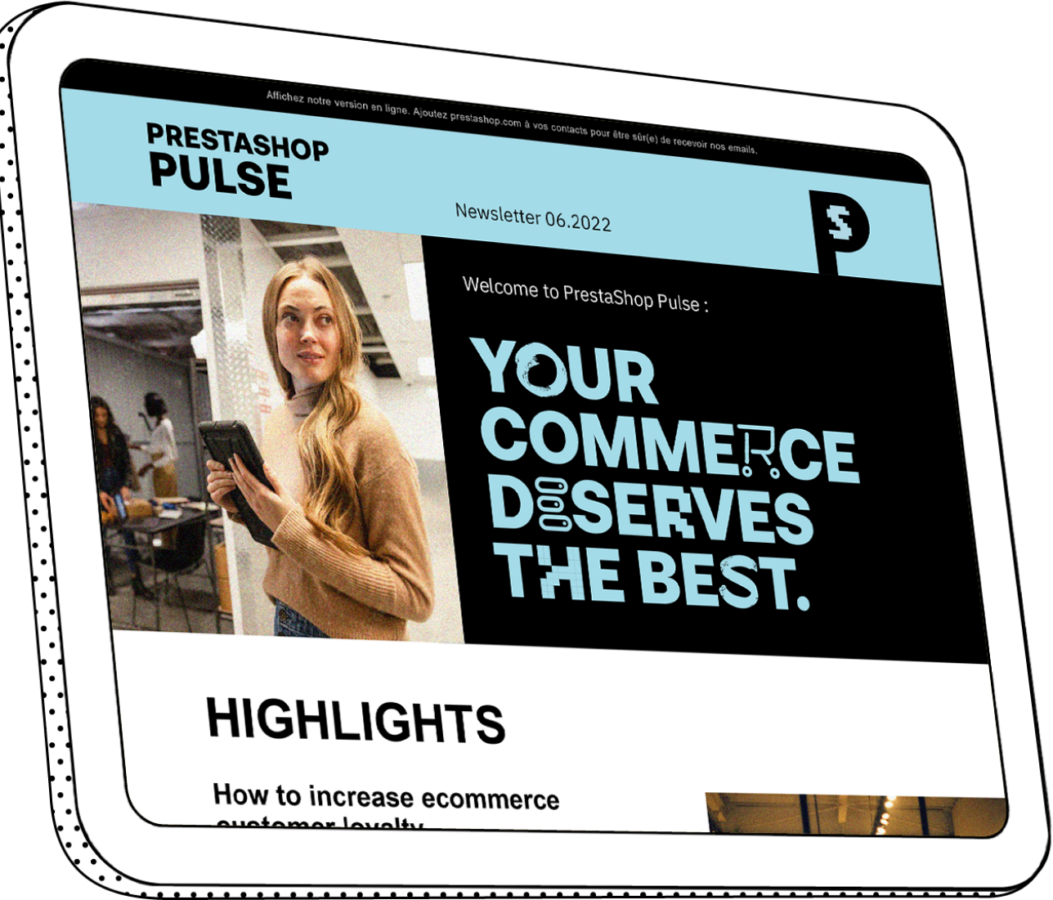
Do you have a communication plan?
Let’s face it—building an online store with PrestaShop is exciting, full of potential, but also filled with challenges. Without a clear strategy, your brand might go unnoticed. That’s why a communication plan is essential—it structures your actions, ensures ongoing visibility, and turns visitors into loyal customers. Here’s how to create and optimize a communication plan that sets your shop up for lasting success.
Why Your PrestaShop Store Won’t Succeed Without a Communication Plan
Launching an online store involves more than picking a platform, uploading products, and hoping customers show up. Many online stores rely solely on good products and a nice-looking site. But even the best product won’t sell if no one knows it exists.
A communication plan is a detailed roadmap showing how your brand will engage with its audience. It should include:
- Objectives: Do you want to boost brand awareness, drive traffic, increase sales, or build loyalty? Every action should support a specific goal.
- Target Audience: Understand your ideal customers—their behaviors, expectations, and preferences—so you can choose the right message and channels.
- Message and Tone: Consistency is key across all platforms (social media, email, ads…).
- Channels: Think beyond social media—include blogs, email, influencers, and paid ads.
- Action Calendar: Schedule your campaigns around key moments (launches, holidays, promotions). Frequency matters, especially on social media.
- KPIs: Track your results to adjust your approach and continually improve.
Define Clear Objectives to Shape Your Marketing Strategy
Start by defining specific, measurable goals.
If your brand is new, focus on awareness and traffic using social media campaigns, influencer marketing, or SEO.
If your store is established but sales are stagnating, focus on improving conversions through better product storytelling, email campaigns, or UX enhancements.
Once you’ve built a customer base, loyalty becomes your top priority. Use tailored content, personalized offers, and consistent communication to turn first-time buyers into repeat customers.
Do You Really Know Your Audience?
An effective message starts with knowing your audience. Ask yourself:
- Who are your potential customers? (age, gender, location, interests)
- What do they need and expect?
- Where and how do they consume online content?
Use data from social media and tools like Google Analytics or PrestaShop Metrics to refine your targeting.
Build a Strong Editorial Identity
Successful ecommerce brands have a recognizable identity. Your tone, visuals, and values must be aligned across all communication channels.
Here’s what to define:
- Tone: Friendly, professional, inspiring, humorous… whatever fits your audience.
- Core Values: Sustainability, innovation, accessibility, exclusivity… align them with your target audience.
- Storytelling Style: Tell your brand’s story in a way that builds emotional connection.
For instance, an eco-conscious fashion brand should communicate differently than a premium tech store. Analyze your competitors for inspiration.
Which Social Media Platforms Should You Focus On?
Once you’ve defined your audience and message, pick the right platforms.
In 2023, Instagram was the preferred shopping platform for Gen Z and millennials. But habits vary: Gen Z favors TikTok, millennials lean toward YouTube and Facebook.
Older generations (Gen X and boomers) are more likely to use Facebook and YouTube. These generational trends should guide your social strategy.
Don’t forget other valuable channels:
- Email Marketing: Still one of the best ways to drive sales and customer retention—but only if done right.
- Blog & SEO: Free, effective, and excellent for long-term traffic—as long as you avoid common SEO mistakes.
- Paid Ads: Google Ads and social media ads deliver fast results—but watch your budget.
- Influencer Marketing: Collaborating with trusted influencers can rapidly build awareness and trust.
The Power of an Editorial Calendar
Even the best strategies fail without organization. An editorial calendar helps you plan and stay consistent.
Steps to build one:
- List Key Dates: Think sales, holidays, Black Friday, product launches… or niche events like Green Friday or World Cybersecurity Day.
- Define Frequency: Example: 1 Instagram post/day, 2 newsletters/month, 1 blog post/month.
- Leave Room for Flexibility: Stay responsive to trends and news—these can inspire timely content.
A calendar helps avoid last-minute scrambling and ensures steady communication.
Analyze and Adapt Your Strategy in Real Time
One advantage of digital communication is the ability to track everything. Use tools like Google Analytics to monitor traffic, conversion, and engagement.
Key KPIs include:
- Website traffic
- Email open and click-through rates
- Social media engagement and reach
- Conversion rate
- Average cart value
If something’s not working—pivot. For example, if your brand newsletters aren’t getting opened, try a different tone or send time.
Your Communication Plan: Your Greatest Asset
A strong communication plan is key to success in ecommerce. More than short-term gains, every message, channel, and tone tells the story of your brand.
Never underestimate the power of a well-crafted message. Each post, email, or reply builds the identity your audience remembers. So ask yourself: what impression do you want to leave?





